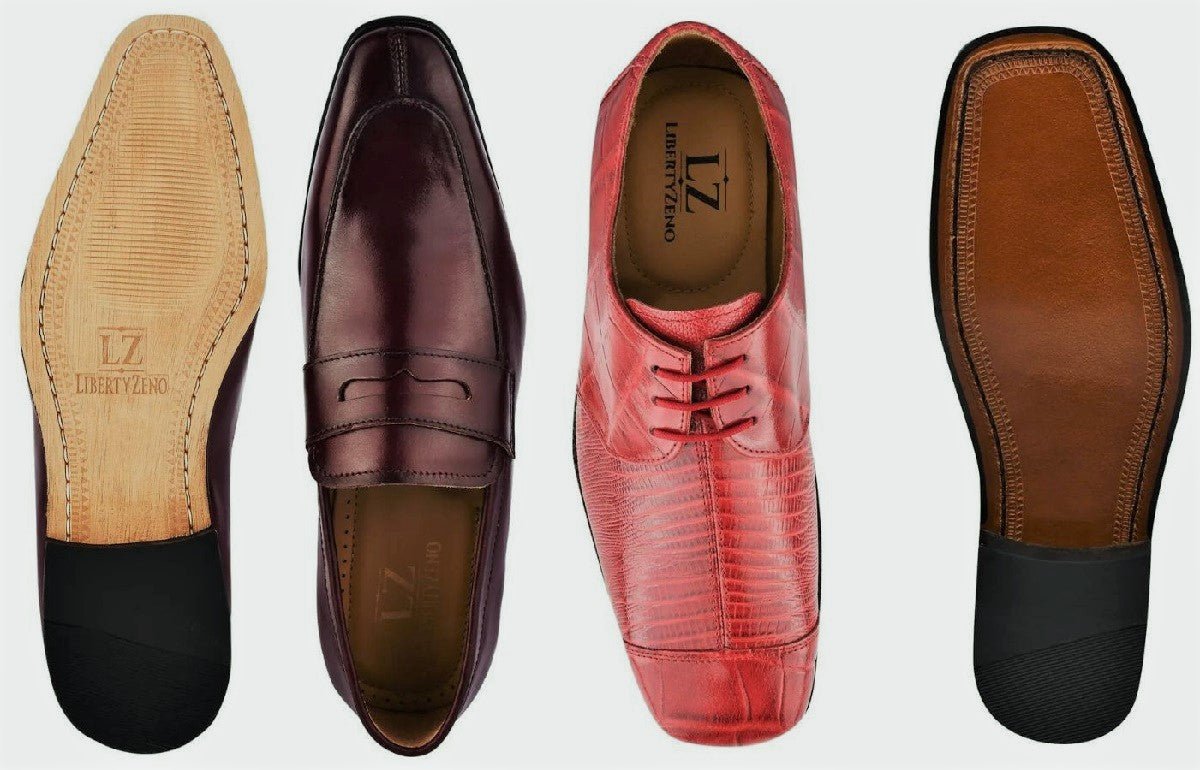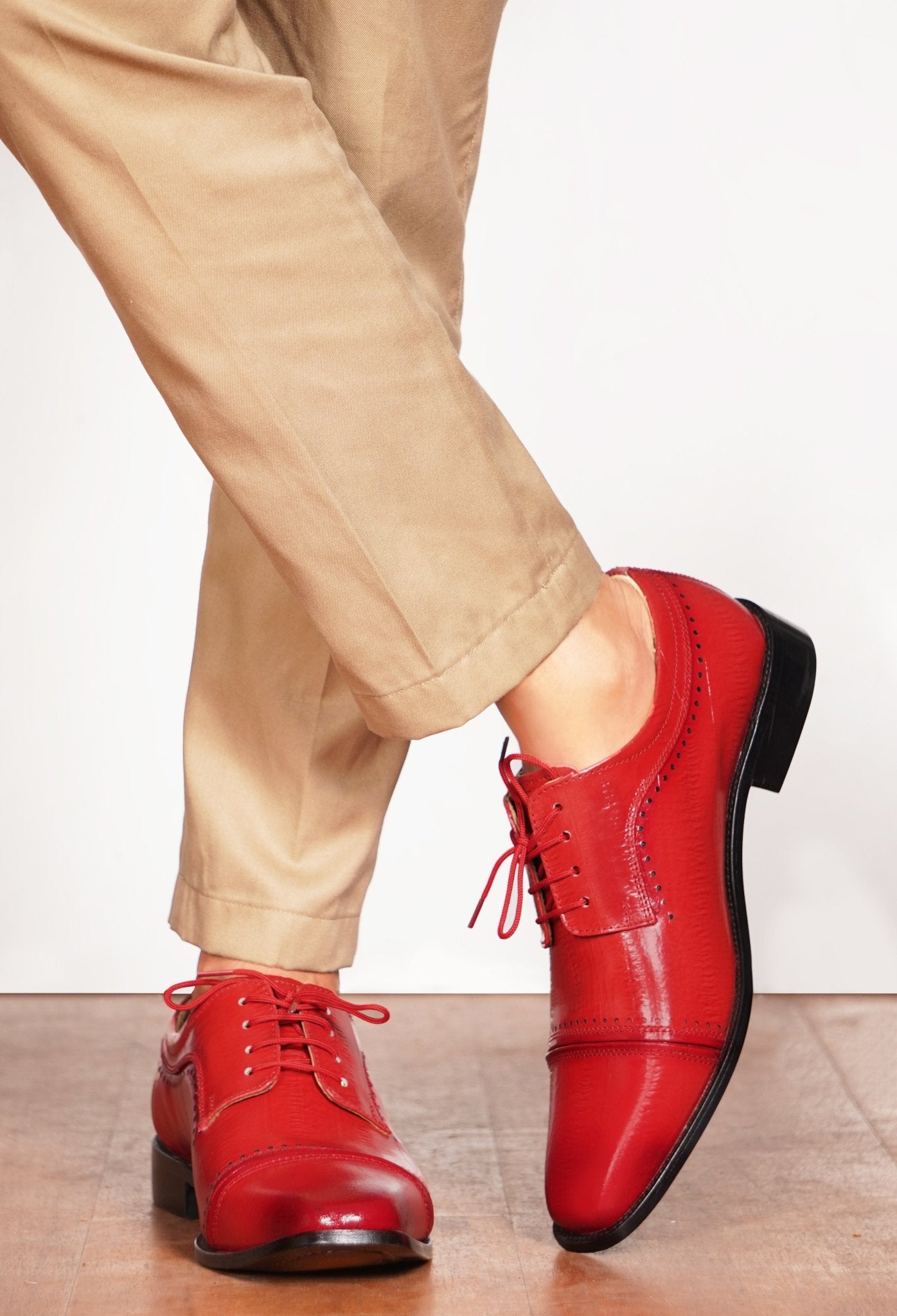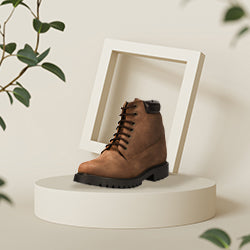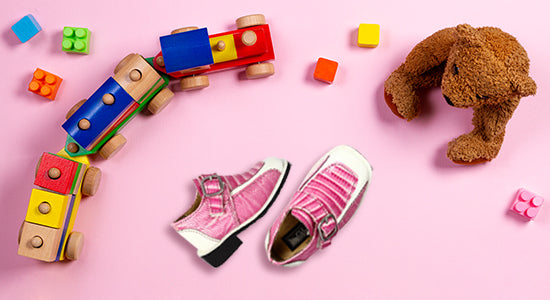A Complete Guide to Different Types of Shoe Soles

When it comes to footwear, the soul lies in the soles. Each type brings its unique charm and functionality to the table, catering to diverse preferences and lifestyles. They are also named after the types of shoe sole material. So come, let's get through the world of boot and shoe soles, understanding their nuances, pros, and cons.
Table of Contents
1. Leather Soles

The name derives from the material they are crafted from; these soles are named for the timeless elegance of leather.
Timeless Elegance- The beauty lies in the leather types of soles’ ability to mold to the contours of your feet over time, providing that personalized fit we all crave. However, elegance comes at a cost. Full-grain leather sole shoes can be a bit slippery, and they're not the best companions in wet weather.
To keep these classics in top-notch condition, wiping them clean with a damp cloth and a touch of leather conditioner goes a long way. Clean, care & and maintain your leather shoes. Just remember, a little TLC goes a long way in preserving the charm of leather soles. What sets them apart is their ability to mold to the unique contours of the wearer's feet over time, creating a personalized and elegant fit that stands the test of time.
2. Rubber Soles

Aptly named for the primary material they are composed of, rubber soles provide durability and traction.
Whether you're navigating urban jungles or outdoor terrains, rubber soles have your back. They're water-resistant too, making them a reliable choice in unpredictable weather. On the flip side, some may find them a tad less breathable.
To extend their lifespan, a simple wipe with a damp cloth and a rubber protectant will keep different types of shoe soles ready for the next adventure. Designed to withstand diverse terrains, they provide a steadfast grip, making them the reliable companions for journeys both urban and adventurous.
3. EVA Soles

Named after the material "ethylene-vinyl acetate," EVA soles are recognized for their lightweight and shock-absorbing properties.
The shock-absorbing quality makes them ideal for long strolls or extended periods on your feet. However, there's a trade-off; EVA soles might wear out faster than their counterparts.
To care for these lightweight companions, avoid extreme heat, give them a gentle cleaning with mild soap and water, and let them bask in the fresh air for a while. EVA types of shoe soles mean feather-light comfort, offering a subtle cushioning that lightens each step, a comfort amidst the elements.
4. Combination Types of Shoe Soles

Blending the best of both worlds, these soles derive their name from the combination of different materials such as leather and rubber, creating a versatile footwear option. Or even EVA and rubber – each contributing its unique strengths.
The result? Versatility that adapts to various terrains and occasions. However, it's not a one-size-fits-all scenario; careful consideration of the individual components is essential. When it comes to care, it's a bespoke approach – follow the care instructions for each material included in this dynamic duo. Summing up, the combination of boot soles means versatile performance with a strategic material mix.
5. PU Soles

Short for polyurethane, PU soles get their name from the durable and wear-resistant material they are made of. For those who demand durability in every step, PU soles rise to the occasion. Polyurethane soles are the heavy-duty contenders, resistant to the wear and tear of everyday life. Their robust nature, however, comes with a compromise on flexibility.
To keep these stalwarts in top form, a simple wipe with a damp cloth and strategic avoidance of prolonged sunlight exposure is the secret recipe. PU soles are the second name for their impressive resistance to oil and chemicals among the different types of shoe soles. Come and step into durability—the PU way—and you will thank us later.
6. Dainite Soles

image Source: dainite
When versatility meets sturdiness, you get Dainite soles. Named after the Dainite brand, these soles feature a distinct studded pattern for enhanced traction. If you're someone who values a solid grip, Dainite soles are your allies. However, flexibility might take a slight backseat.
To care for these stalwart soles, a regular brushing-off of dirt and debris, coupled with a specialized sole cleaner, ensures they stand the test of time. Steadfast in any weather—Dainite types of soles promise.
7. Crepe Soles

Second last, but among the top contenders, enter the comfort champions – Crepe Soles. Crafted from natural rubber, they boast unmatched comfort and flexibility. However, this comfort comes at a cost; crepe soles tend to wear out faster.
To maintain their cozy charm, regular brushing off of dirt, avoiding excessive moisture, and storing them in a cool, dry place are the golden rules. And the best part is that, just like the leather types of soles, you can take pride in natural rubber's inherent eco-friendliness!
8. TPU Soles
Among the different types of boot soles, TPU soles stand for the balancing act of durability and flexibility. Thermoplastic polyurethane soles offer a sturdy foundation while maintaining flexibility. They resist abrasion and adapt to various conditions seamlessly.
To keep these adaptable companions in prime condition, a wipe with a damp cloth is all it takes. TPU soles – where durability meets flexibility with a touch of simplicity.
Summing up...among the different types of shoe soles, each type tells a story of its own.
From the timeless elegance of leather to the adaptable nature of TPU, the choice of shoe sole material becomes a reflection of personal style and practical needs. So, which shoe sole will carry you through your next adventure? Here's a parting tip: rotate your boot. Just like giving your favorite pair a day off, rotating between different types of soles not only prolongs their life but also ensures you're ready for any terrain. It's the secret to keeping your soles happy and your every step a confident one.
FAQs
1. Which type of sole is best for running shoes?
For running shoes, the EVA sole stands out as an excellent choice. Its lightweight composition and shock-absorbing properties provide the necessary comfort and support, making it a preferred option for runners seeking a responsive and cushioned experience.
2. Which type of sole is best for dress shoes?
When it comes to dress shoes, leather soles take the lead. Renowned for their classic elegance and ability to mold to the wearer's foot over time, leather soles add a touch of sophistication to formal footwear while ensuring a comfortable and tailored fit.
3. What is the most common shoe sole?
Rubber soles claim the title of the most common shoe sole. Their widespread use is attributed to the combination of durability and reliable traction they offer, making them a versatile choice for various styles of footwear, from casual sneakers to work boots.



